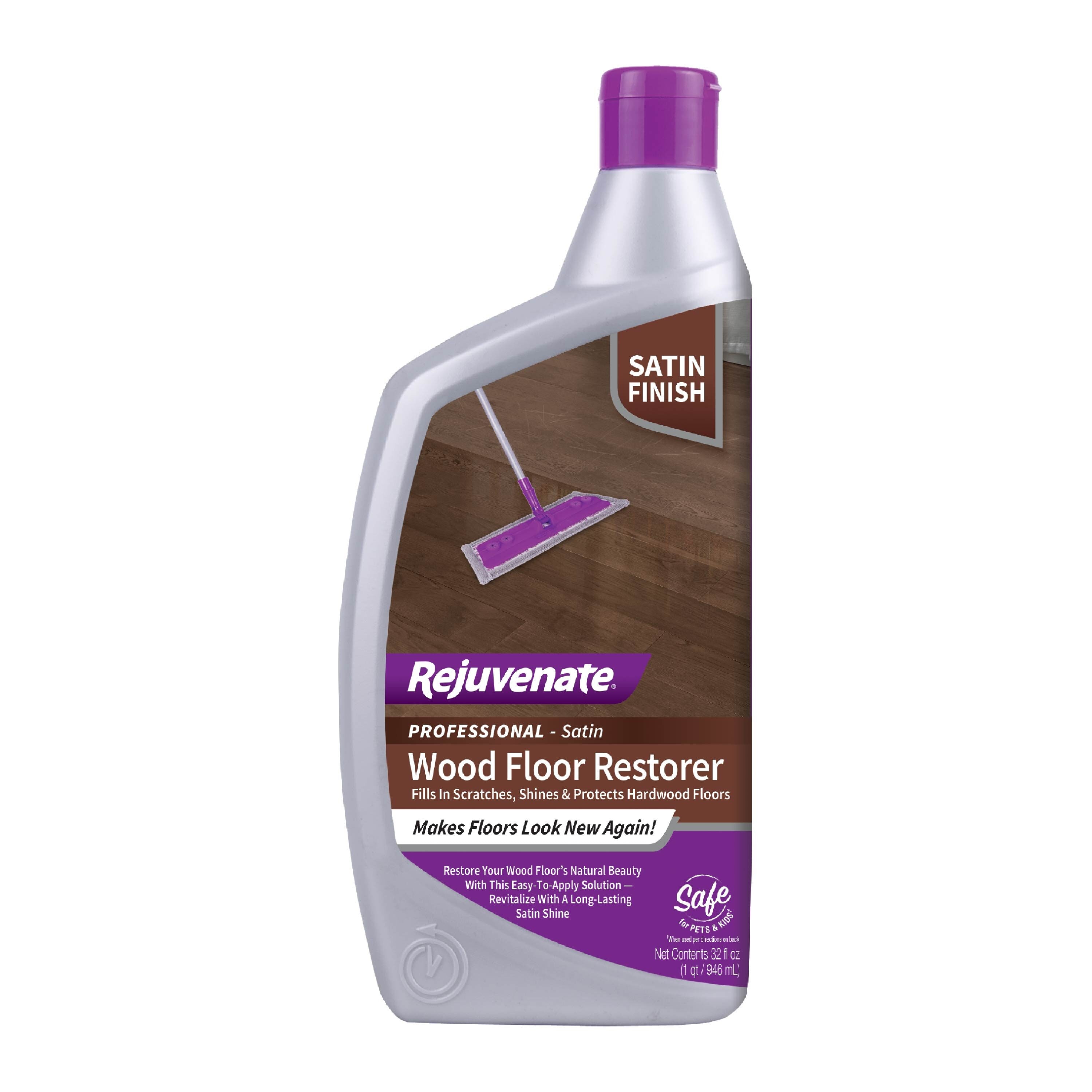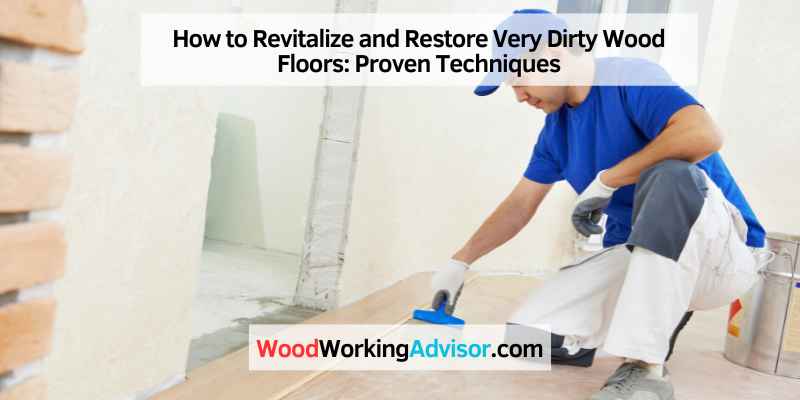To clean very dirty wood floors, start by sweeping or vacuuming to remove debris. Then mop with a mixture of water and mild soap.
Wood floors are a beautiful addition to any home, but they require regular cleaning to maintain their aesthetic appeal. Over time, dirt, grime, and other particles can accumulate on the surface, making the floors look dull and uninviting. Fortunately, by following a few simple steps, you can effectively clean very dirty wood floors and restore their natural shine.
We will discuss the best methods for deep cleaning wood floors to help you achieve a spotless and polished look. Let’s delve into the process of cleaning very dirty wood floors to bring back their original luster.

Credit: www.lowes.com
Preparation For Restoration
Discover the secrets to effectively cleaning very dirty wood floors with our preparation for restoration tips. Get rid of stubborn dirt and grime to reveal the beauty of your wood floors.
Cleaning The Surface
Before cleaning very dirty wood floors, start by clearing the area of furniture and sweeping the floor thoroughly.
- Use a mild detergent mixed with warm water
- Apply the solution with a mop or soft cloth
- Rinse the floor with clean water to remove any residue
Sanding The Floors
To sand the wood floors, you will need a drum sander and sandpaper of varying grits.
- Start with a coarse grit to remove old finish
- Gradually switch to finer grits for a smooth surface
- Vacuum the floor to remove sanding dust

Credit: www.lemonthistle.com
Repairing The Damage
Wood floors that are very dirty often come with some degree of damage that needs to be repaired. Here are some effective ways to rectify the issues:
Filling In Gaps And Cracks
- Inspect the floor for gaps and cracks.
- Use a wood filler that matches the floor color.
- Apply the filler according to the product instructions.
- Smooth out the filler with a putty knife.
- Allow the filler to dry completely before sanding it down.
Replacing Damaged Planks
- Identify the damaged planks that need replacement.
- Carefully remove the damaged planks using a crowbar.
- Measure the dimensions of the plank to be replaced.
- Purchase a new plank that matches the wood type and color.
- Install the new plank by fitting it into place securely.
Revitalizing The Wood
Revitalizing the wood of very dirty wood floors is crucial to bringing back their natural luster and beauty. Over time, wood floors can become worn, scratched, and dull. However, with the right techniques, you can restore them to their former glory. In this section, we’ll discuss how to choose the right stain for your wood floors and how to properly apply the finish to achieve a revitalized appearance.
Choosing The Right Stain
When revitalizing very dirty wood floors, the first step is choosing the right stain to enhance and protect the natural beauty of the wood. Consider the color and finish you desire, keeping in mind the existing decor and the overall aesthetic of the space. Ensure the stain you select is specifically formulated for wood floors to achieve optimal results.
Applying Finish
After selecting the appropriate stain, the next step is to apply the finish to protect the revitalized wood floors. Thoroughly clean the surface to remove any dust or debris before applying the finish. Carefully follow the manufacturer’s instructions to achieve an even and smooth application, ensuring maximum protection and durability for the wood floors.
Maintaining Restored Floors
To effectively clean very dirty wood floors, begin by sweeping away debris and vacuuming the surface. Then, mop the floor using a gentle cleaner and make sure to dry it thoroughly. For a more thorough cleaning, consider using a wood floor restorer to protect and maintain the restored floors.
Once you’ve thoroughly cleaned your very dirty wood floors and brought them back to their former glory, it’s crucial to establish a regular cleaning routine to maximize their lifespan and keep them looking their best. By following a few simple tips and avoiding common mistakes, you can ensure that your restored wood floors stay beautiful for years to come.
Regular Cleaning Routine
Maintaining your restored wood floors starts with a regular cleaning routine. By implementing a consistent schedule, you can prevent dirt, dust, and grime from accumulating and potentially damaging the surface.
Vacuum or Sweeping
One of the easiest and most effective ways to keep your wood floors clean is by vacuuming or sweeping them regularly. This practice helps to remove dirt and debris that can scratch the surface over time. Use a soft-bristle broom or a vacuum cleaner with a floor brush attachment to gently sweep away the dirt.
Microfiber Mopping
For more thorough cleaning, use a microfiber mop dampened with water or a specially formulated wood floor cleaner. Microfiber mops are excellent for capturing and trapping dirt without scratching the wood. Avoid using excessive water, as too much moisture can cause damage to the wood. Instead, lightly mist the mop with a wood floor cleaner to ensure a safe and effective cleaning process.
Spot Cleaning
Accidents happen, and occasionally you may spill something on your wood floors. It’s important to address these spills promptly to prevent staining or warping. Use a soft cloth or paper towel to blot the spilled liquid gently. Avoid rubbing or scrubbing, as this can further spread the stain or push it deeper into the wood. If necessary, use a mild soap diluted with water to clean the affected area and then dry it immediately.
Avoiding Common Mistakes
While establishing a regular cleaning routine is crucial for maintaining your restored wood floors, it’s equally important to avoid common mistakes that can unintentionally damage them.
Abrasive Cleaners
When it comes to cleaning your wood floors, always avoid abrasive cleaners or harsh chemicals. These products can strip away the protective coating, leaving your floors vulnerable to scratches and discoloration. Instead, opt for gentle, pH-neutral cleaners specifically designed for wood floors.
Vinegar and Water Solutions
Although vinegar is a popular household cleaning ingredient, it’s not suitable for cleaning wood floors. The acidity of vinegar can damage the protective finish over time, causing the wood to become dull and susceptible to wear. Stick to pH-neutral cleaners or consult with a professional for appropriate cleaning solutions.
Excessive Water
Using excessive water on your restored wood floors can lead to warping, swelling, and even mold growth. Always remember to use a damp mop or cloth rather than soaking the floors with water. Additionally, dry any spills immediately to prevent moisture from seeping into the wood.
By establishing a regular cleaning routine and avoiding common mistakes, you can maintain the beauty and longevity of your restored wood floors. With a little care and attention, your floors will continue to shine and impress for years to come.

Credit: littleterracedhouse.com
Frequently Asked Questions For How To Clean Very Dirty Wood Floors
What Is The Best Way To Clean Really Dirty Wood Floors?
To clean really dirty wood floors, mix water and vinegar, then mop. For stubborn stains, use a wood floor cleaner.
How Do You Clean Hardwood Floors That Haven T Been Cleaned In Years?
To clean hardwood floors that haven’t been cleaned in years, sweep to remove debris, mop with a hardwood floor cleaner, and dry immediately for a shiny finish.
Why Are My Hardwood Floors Still Dirty After Mopping?
Dirty hardwood floors after mopping could be due to using too much water, not sweeping before mopping, using the wrong cleaner, or not rinsing the mop. Excess water can seep into the wood, while dirt needs to be swept away before mopping.
Use a suitable cleaner and ensure proper rinsing.
How Do You Get Dirty Film Off Hardwood Floors?
To remove dirty film from hardwood floors, start by sweeping or vacuuming the surface to remove loose dirt. Then, mix a gentle hardwood floor cleaner with warm water and mop the floor using a damp mop. Avoid using excessive water to prevent damage.
Dry the floor thoroughly afterward.
Conclusion
Maintaining very dirty wood floors requires a combination of effective cleaning methods. By following the tips and tricks discussed in this blog post, you can ensure that your wood floors remain clean and beautiful. Regular maintenance and proper cleaning techniques will help to preserve the natural beauty of your wood floors for years to come.


